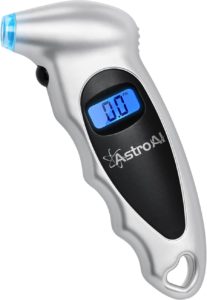Ever come across a tire pressure monitoring system? It’s an impressive feature included in the BMW Z4. Basically, it’s a system designed to monitor the air pressure within your tires. If the pressure drops too low, a warning light on your dashboard will alert you. This enables you to address the issue before it leads to problems such as a flat tire or reduced fuel efficiency. It might be a minor feature, but it plays a significant role in ensuring your safety while driving! Keep reading to learn how to reset the tire pressure light and what are the most common reasons it turns on!
How to Reset BMW Z4 Tire Pressure Warning Light
VERSIONS
2003 – 2008 (E85/86)
Using the blinker switch on the side of the steering wheel.
Use the toggle, and toggle up until your dashboard has the tire pressure warning light in between your speedometer and tachometer. (the toggle is where the up and down arrows on the blinker switch are)
Hold down the BC button for a few seconds, then release it.
Hold down the BC button again until a checkbox appears below the tire warning light.
Release the BC button.
Drive your BMW Z4!
2009 – 2016 (E89)
Select the MENU button on the Idrive system
Select VEHICLE INFORMATION from the main Idrive menu using the Idrive scroll and selector wheel.
Select VEHICLE STATUS
Select PERFORM RESET
Select PERFORM RESET again
Drive your BMW Z4!
2018 – PRESENT (G29)
Select CAR on the Idrive infotainment screen
Select VEHICLE STATUS
Select TIRE PRESSURE MONITOR
Select TIRE SETTINGS
Choose the correct TIRE TYPE (choose summer or winter if you swap tires for different seasons)
Select SAVE TIRE SETTINGS
If you are swapping between winter and summer tires, follow the same steps but select PERFORM RESET after selecting the season.
Drive you BMW Z4!
Everything in this article is applicable to all BMW Z4 versions and models including M competition versions. (ROADSTER, COUPE, M40i)
How Does the BMW Z4 TPMS Work?
Monitors tire pressure continuously: The BMW Z4 TPMS constantly keeps track of pressure levels in all four tires.
Uses built-in sensors: Each tire is fitted with a sensor that measures pressure and sends the information to the vehicle’s onboard computer.
Compares current pressure to optimal levels: The system evaluates the existing tire pressure against the recommended pressure levels for the BMW Z4.
Alerts the driver: If the pressure in any tire deviates from the suggested range, the TPMS sends a warning to the driver through the dashboard.
Identifies the affected tire: The system pinpoints which tire has the pressure issue, letting you know which tire to adjust.
When to Reset BMW Z4 TPMS?
• Following tire replacement: New tires might have different pressure levels compared to the old ones.
• Post tire rotation: Ensuring accurate monitoring of each tire’s pressure in their new positions.
• Transitioning between seasonal tires: When switching from summer to winter tires or vice versa.
• Adjusting tire pressure: In situations where you’ve changed the pressure to accommodate different loads, such as carrying or towing heavy weight.
• After tire inflation: Once you’ve inflated your tires to the appropriate pressure upon receiving a low-pressure warning.
• Installing a new sensor: If a damaged or faulty sensor needs to be replaced.
• TPMS issues: In case the TPMS shows an error message or is not working correctly.
• Following wheel services: After completing rotations, balances, or alignments.
• During routine maintenance: As part of your vehicle’s regular care and service.
• Post software update: When your car gets an update specifically related to the TPMS.
Common Causes for BMW Z4 Tire Pressure Light to Turn On?
• Low tire pressure: The primary cause for the tire pressure light turning on is one or more tires having pressure below the recommended level.
• Rapid pressure loss: A sudden drop in tire pressure, often due to a puncture or leak.
• Temperature fluctuations: Changes in ambient temperature can affect tire pressure, which may cause the TPMS light to turn on if pressure deviates from the acceptable range (quite common!).
• Defective TPMS sensor: A malfunctioning or damaged TPMS sensor can lead to incorrect readings.
• Dead sensor battery: TPMS sensors are powered by batteries (similar to watch batteries) that eventually deplete, usually lasting between 5 to 7 years.
• High tire pressure: Overinflating your tires can also trigger the tire pressure light.
• Damaged tire: Physical damage to the tire, such as sidewall bulges, cuts, or cracks, may cause pressure changes and prompt the tire pressure light to come on.
• Wheel/rim damage: In BMWs, cracked wheels leading to air leaks are a common problem.
• Spare tire: Using a spare tire or donut without a sensor (for those without run-flat tires).
• Recent tire service: The TPMS might not have been reset properly after a tire rotation, installation, or inflation.
• Faulty TPMS control module: A malfunctioning TPMS control module may not correctly process sensor data.
• Seasonal tire changes: Neglecting to reset the TPMS when transitioning between summer and winter tires.
• Dead or jump-started battery: Following a battery replacement or jump-starting your vehicle’s battery.
What Happens When Your BMW Z4 Tires are Underinflated?
When your BMW Z4’s tires are underinflated, it can lead to a variety of issues that impact the overall performance and safety of your vehicle. Underinflated tires increase rolling resistance, which can result in reduced fuel efficiency and excessive tire wear. Moreover, inadequate tire pressure reduces the tire’s contact with the road, negatively affecting handling, braking, and cornering abilities. The risk of tire blowouts and punctures also rises, as underinflated tires are more prone to overheating and sidewall damage. Ultimately, driving your BMW Z4 with underinflated tires compromises your safety and the longevity of your tires, making it crucial to maintain optimal tire pressure!



